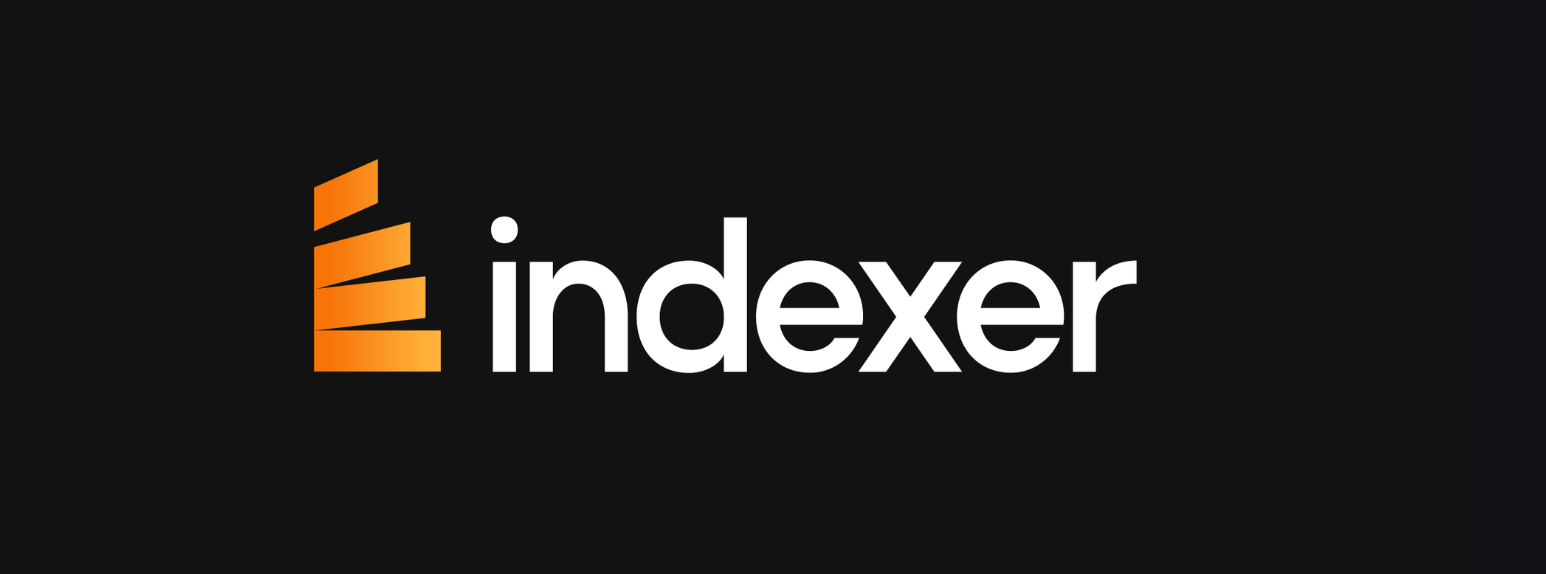
Enabling your application to interact with multiple chains is crucial for staying competitive. The key to this adaptation lies in effectively leveraging Indexer APIs, which simplify how your application communicates across diverse blockchain networks.
In this short guide, we’ll learn how to integrate multichain functionality into your application using Indexer APIs:
What Are the Benefits of Going Multichain
- Resilience: Operating across multiple blockchains allows your application to continue functioning even if one network experiences downtime or congestion.
- Flexibility: Different blockchains offer different features (e.g., faster transactions, lower fees, unique smart contract capabilities). A multichain approach lets you leverage these features to enhance your application.
- Broader Reach: Expand your user base by tapping into the communities and ecosystems of multiple blockchains.

5 Steps to Achieve Multichain Capability
Step 1: Blockchain Assessment and Strategic Planning
Objective:
Identify which blockchain networks align with your application's functionality, audience, and goals.
Actions:
1- Research:
- Transaction Speeds: Evaluate the blockchain's average transaction times. Faster blockchains like Solana are suited for high-frequency operations, while Ethereum 2.0 aims to improve Ethereum's current speeds.
- Costs: Consider transaction fees, which vary widely. Ethereum may incur high costs during peak times, whereas Stellar or Ripple offer lower fees.
- Consensus Mechanisms: Understand the blockchain's consensus model (e.g., PoW, PoS), which impacts scalability, security, and energy consumption.
- Ecosystem Richness: Look for a supportive ecosystem with development tools, libraries, and active community forums.
2- Compatibility Check:
- High Throughput: If your app demands frequent transactions, prioritize blockchains designed for high performance, like Solana or Algorand.
- Smart Contract Capabilities: Choose based on the complexity of your smart contracts. Ethereum is popular for its Solidity language, while Tezos offers formal verification for security.
- Data Storage Needs: For apps requiring on-chain data storage, consider blockchains like Arweave for permanent, decentralized solutions.
3- User Demographics:
- Community Engagement: A vibrant community can offer developer support and help drive user adoption. Ethereum’s community is notably large and active.
- Target User Base: Identify blockchains popular with your target demographic. Ethereum dominates the DeFi and NFT spaces, while Flow caters to digital collectibles and gaming.
- Cross-Chain Preferences: Consider ecosystems that facilitate cross-chain interactions to enhance your app's reach and functionality.

Step 2: Selection of Appropriate Indexer APIs
Objective:
Choose the most reliable and efficient Indexer APIs that cover the blockchain networks you plan to integrate.
Actions:
1- Feature Comparison:
- Data Availability: Look for APIs that not only provide a wide range of data types—such as transaction histories, wallet balances, and smart contract events—but also offer comprehensive coverage of the blockchains you’re interested in.
- Update Frequency: Consider the importance of data timeliness for your application; if you require up-to-the-minute information, prioritize Indexer APIs that boast high update frequencies to keep your application data fresh.
- Query Capabilities: Evaluate whether the API supports advanced query functions like filtered searches, aggregated data endpoints, and historical data queries, to facilitate complex data analysis and enhance user experience.
2- Community and Support:
- Community Engagement: Investigate the size and activity level of the API’s user community through forums, social media, and GitHub. A large and active community can provide a wealth of knowledge and peer support.
- Support Responsiveness: Assess the availability and quality of official support by looking at response times, the presence of dedicated support teams, and the availability of direct support channels like email or chat.
- Developer Resources: The best Indexer APIs come with comprehensive documentation, easy-to-follow tutorials, and SDKs for various programming languages, making the integration process smoother and faster for developers.
3- Security and Reliability:
- Security Measures: Confirm that the API employs industry-standard security practices, including data encryption in transit and at rest, API request authentication, and regular security audits to mitigate potential vulnerabilities.
- Uptime Track Record: Research the API’s historical uptime, looking for providers with high availability and contingency plans for network downtimes, ensuring that your application remains operational around the clock.
- Data Accuracy and Consistency: Choose APIs known for delivering accurate and consistent data across different blockchain networks, as reliability in data feeds is critical for maintaining the integrity of your application’s operations.

Step 3: Integrating the Infrastructure
Objective:
Incorporating the chosen Indexer APIs into your application's infrastructure.
Actions:
1- API Client Integration:
- Selecting the Right SDKs: Prioritize SDKs provided by the Indexer API that are well-documented and supported, ensuring they are compatible with the development environment and languages used in your application.
- Seamless Integration Practices: Integrate the SDKs or API clients in a modular fashion, allowing for easy updates or replacements as your application scales or as better solutions become available.
- Efficiency and Optimization: Optimize the use of the Indexer API by batching requests where possible and handling data efficiently, to minimize network calls and improve the application's performance.
2- Authentication Setup:
- Implementing Recommended Practices: Follow the Indexer API's recommended authentication practices, which may include API keys, OAuth tokens, or other secure methods, to ensure that all data transactions are protected.
- Key Management: Develop a secure system for managing and storing authentication credentials, such as using environment variables or secure vaults, to prevent unauthorized access to your API keys.
- Regular Updates and Audits: Regularly review and update your authentication methods to comply with the latest security standards and practices, including rotating keys and auditing access logs to detect potential security breaches early.
3- Data Management:
- Local Database Design: Design your local database schema to efficiently store and retrieve the indexed data, considering the data's structure and how it will be queried by your application.
- Caching Strategies: Implement caching mechanisms to temporarily store frequently accessed data, reducing the need to repeatedly query the Indexer API and speeding up response times for your users.
- Data Synchronization: Establish a mechanism to regularly update your local database and cache with the latest data from the Indexer APIs, ensuring that your application provides up-to-date information without compromising on performance.

Step 4: Developing Multichain Interaction Logic
Objective:
Implement logic within your application that enables seamless interactions with multiple blockchain networks.
Actions:
1- Dynamic API Selection:
- Contextual Logic Development: Incorporate logic that assesses the context of user actions or data requirements, automatically selecting the most appropriate Indexer API based on the blockchain network in focus. This could involve analyzing transaction types, user preferences, or network congestion states.
- Configurable API Endpoints: Set up a configurable system of API endpoints within your application, enabling easy switching or addition of new Indexer APIs as your application expands to support more blockchains or as better indexing services emerge.
- Performance-Based Selection: Implement performance monitoring for each Indexer API interaction, allowing your system to choose APIs not just based on network compatibility, but also on response times and reliability, enhancing user experience.
2-Data Normalization:
- Unified Data Models: Design a unified data model that can accommodate the diverse data structures returned by different Indexer APIs, ensuring that your application can handle and present this data consistently.
- Transformation Rules: Develop a set of transformation rules that automatically convert data from various blockchains into your application's unified format, taking into account differences in data types, precision, and naming conventions.
- Real-Time Adaptation: Incorporate mechanisms that allow for real-time data transformation, enabling your application to immediately reflect changes in blockchain data structures or formats without requiring manual updates.
3-Transaction Handling:
Multi-Network Transaction Protocols: Create protocols within your application that can manage transactions across different blockchain networks, handling specifics like network fees, gas calculations, and nonce management.
- Unified Transaction Interface: Design a user interface that abstracts away the complexities of cross-chain transactions, providing users with a simple and consistent experience regardless of the underlying blockchain technology.
- Transaction State Tracking: Implement a robust system to track the state of transactions across different networks, from initiation to final confirmation, providing users with timely updates and handling failures or retries as needed.

Step 5: Extensive Testing Across Blockchains
Objective:
Ensure that your application operates flawlessly across all targeted blockchain networks.
Action:
1- Scenario Testing:
- Comprehensive Test Coverage: Develop a comprehensive suite of tests that cover every aspect of your application, from individual function calls to complete end-to-end processes. Ensure these tests mimic real-world scenarios as closely as possible, including user behaviors, transaction patterns, and network conditions.
- Peak Load Analysis: Employ tools and methodologies to simulate peak usage conditions, assessing how your system scales in response to high demand. This can highlight potential scalability issues or resource constraints.
- Cross-Chain Functionality Verification: Focus on the seamless execution of cross-chain transactions, which are critical to the multichain experience. Verify that transactions are not only completed successfully but also reconciled correctly across different ledger states.
2- Bug Identification and Resolution:
- Continuous Integration and Deployment (CI/CD) Pipelines: Incorporate automated testing into your CI/CD pipelines to catch bugs early in the development process. Automating this step ensures that every code commit is tested, reducing the likelihood of bugs making it to production.
- Prioritization Based on Impact: When bugs are identified, prioritize their resolution based on the impact on user experience and system stability. Critical bugs that affect core functionalities or compromise user data should be addressed with urgency.
- Root Cause Analysis: For each bug identified, conduct a thorough root cause analysis to prevent similar issues from arising in the future. This approach helps in refining your development processes and enhancing application stability over time.
3- Feedback Loop:
- Structured Beta Testing Programs: Design a structured beta testing program that encourages active user participation. Provide clear guidelines on the types of feedback you’re looking for, and make it easy for testers to report their experiences, issues, and suggestions.
- Quantitative and Qualitative Feedback Analysis: Combine quantitative data from usage metrics with qualitative feedback from users to get a holistic view of your application’s performance and areas for improvement. Use this data to inform development priorities and feature enhancements.
- Iterative Improvement Process: Establish an iterative process for implementing feedback and enhancements. Communicate updates and changes back to your user base regularly, fostering a sense of community and co-creation. This not only improves your product but also builds user loyalty.
Wrapping it all up
By embracing multichain functionality with Indexer APIs, you not only propel your application into a new realm of possibilities but also set the stage for unprecedented growth and innovation in the blockchain space. The journey is one of continuous learning and adaptation, ensuring your application remains at the forefront of the blockchain revolution.
Want to Know More About Blockchain with Indexer's API?
Curious about blockchain technology? Begin your learning with Indexer.xyz! Our mission is to demystify the Indexer API and blockchain, making it accessible and informative for all. Explore Indexer.xyz to instantly engage with and learn from the Indexer API – your gateway to blockchain mastery starts here!




